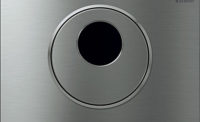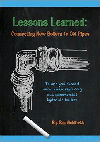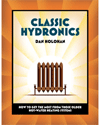Keeping Your Customers Informed About New ADA-Compliant Restroom Fixtures

In selecting plumbing products and fixtures for restrooms, the contractors and project specifiers you serve must weigh myriad considerations - the nature of the business or organization, traffic volume, budget constraints, local codes and, inevitably, the new guidelines required by the Americans with Disabilities Act (ADA). Besides cleanliness and durability, the watchword for today's commercial restroom is user-friendly - for all users.
To improve both compliance and access for the estimated 54 million Americans with some type of disability, the U.S. Access Board in July 2004 released new ADA Access Guidelines (ADAAG). The guidelines align with the Architectural Barriers Act and are more consistent with the International Building Code and other industry standards such as the American National Standards Institute. These guidelines form the base line for standards used by the U.S. Justice Department and other federal agencies to ensure enforcement.
Whether it's new construction or a renovation, restrooms remain a significant source of confusion about accessibility. In addition to the usual questions about installation, maintenance and durability, suppliers and distributors can now expect to be asked about ADA-compliant products. And by understanding some of the key elements of the new guidelines and which products meet them, suppliers and distributors have an opportunity to add value to the inventory they stock and recommend.
ADAAG guidelines and building codes will dictate the number and placement of some elements, and the engineers and designers you serve must have a working knowledge of these new standards to create an ADA-compliant restroom. Although we cannot address all of these issues, here is some additional background on ADA compliance and how the requirements affect restroom design.

Lavatories And Sinks
To ensure accessibility within the “toilet room,” the ADAAG requires an accessible route with adequate floor space for maneuvering wheelchairs, specific reach ranges and no protruding objects. In addition to clear floor space, ADA requirements cover counter surface, rim height, and knee and toe space.In the past, lavatories were required to provide at least 29 inches of knee clearance. The specific dimensions have been replaced with a clarified knee and toe clearance requirement that applies across other elements, such as tables and counters. For adults, the top of the lavatory cannot be higher than 34 inches above the floor. The new guidelines include limited dimensional requirements for fixtures used primarily by children; previous standards were only advisory.
The ADAAG now states that no more than one bowl of a multi-bowl sink is required to provide minimum knee and toe clearances. A simple and attractive way for contractors to meet code is with new solid-surface, all-in-one multi-height lavatory systems designed for all users. These units may be ordered with one to three user stations. Some manufacturers offer an interesting wave design that combines a lower ADA-compliant sink with a higher sink, making it ideal for washrooms in restaurants, bars, hotel lobbies and fitness centers.
An added benefit is that the solid-surface finish is a good choice aesthetically. Solid-surface materials can be selected in a range of color options, many of which have natural-looking textures or chunks of aggregate that resemble granite. The continuous bowl is easy to clean, and the surface resists burns, impact, chemicals and graffiti. If damage does occur, the solid-surface units can be easily repaired.
Faucets
Lavatory and sink faucet controls are another restroom component that must be accessible. Faucets must be mounted to ADA-compliant lavatories for the age group that will primarily use the facility. According to the ADA, faucets must be operable with one hand, without tight grasping or twisting, and should be activated using a maximum of five pounds of force. Hand-operated metering faucets must remain open for at least 10 seconds. Look for products that meet those standards.Designers are often looking for fixtures, shower valves and lavatory faucets that echo trends in residential design. Commercial plumbing manufacturers are responding by offering more options in a range of finishes, such as polished or brushed, and many styles coordinate with other product lines.
Lever, paddle and infrared faucet controls all make turning the water on and off easy for anyone with a disability. Lever-handle faucets are helpful when only one hand can be used. Infrared-controlled and capacitive-sensor controlled faucets are the most universal, offering users touch-free, easy activation.
These hands-free or “touchless” lavatory fixtures and soap dispensers that operate using electronics are ideal for other reasons. They are energy-efficient, because water is automatically shut off when the user's hands leave the sensor area, and they can help eliminate the spread of germs in the sink area - a top concern among the public.
Access To Accessories
Remind your customers that wall-hung accessories must meet ADA reach-range and mounting-height requirements. The guidelines specify that faucets, soap dispensers and other accessories be no more than 48 inches high, except those mounted over obstructions that are more than 20 inches deep (this includes lavatory fixtures). At 20 to 25 inches deep, a reach range of 44 inches applies. Accessories more than 25 inches deep (such as a soap dispenser) must be relocated.Because the ADAAG has restrictions against barriers in restrooms, recessed trash receptacles or combination paper towel dispenser and trash receptacle are a better option than trash cans placed on the floor. Recessed units eliminate barriers wheelchair patrons face when they must navigate around obstacles to reach for wall-mounted paper towel dispensers. An even more economical choice is a wall-mounted hand dryer because it eliminates paper waste. Be sure to offer dryers that meet the ADA protrusion requirement - that is, they cannot protrude more than four inches from the wall.
The ADAAG states that mirrors shall be mounted with the bottom edge of the reflecting surface no higher than 40 inches above the floor, and the top edge at least 74 inches from the floor. Some manufacturers offer mirrors to complement lavatory systems and other accessories. Mirrors with a wave-shaped design that follows the shape of the lavatory are popular, because they make public restrooms appear warmer and more inviting.
Shower Units
For buildings with shower units and shower stalls, ADAAG has new requirements for shower sprays. Previously, ADA stipulated that a shower spray unit with a hose at least 60 inches long could be installed as a fixed shower head or hand-held shower. Under the updated requirement, a shower spray unit must be equipped with a hose at least 59 inches long and can be used as both a fixed-position shower head and hand-held shower. If an adjustable-height shower head on a vertical bar is specified, the bar cannot obstruct the use of grab bars.In addition, the shower spray unit must have an on-off control with a nonpositive shut-off, and the shower water temperature cannot exceed 120° F. To ensure that that standard is met, suggest contractors install thermostatic mixing valves (TMVs) or pressure-balancing valves. These valves prevent scalding by blending hot and cold water to a maximum setting, such as 110 degrees. A pressure-balancing valve holds outlet temperature if the incoming pressure changes. A thermostatic valve also responds to pressure changes, and holds outlet temperature should the incoming hot or cold water temperature change.
Reassure your customers that you understand the new ADA constraints they face. Demonstrate that you not only can offer them fixtures and fittings of the highest quality and appealing design, but also carry a product line that's built with the new ADAAG in mind.
Looking for a reprint of this article?
From high-res PDFs to custom plaques, order your copy today!







